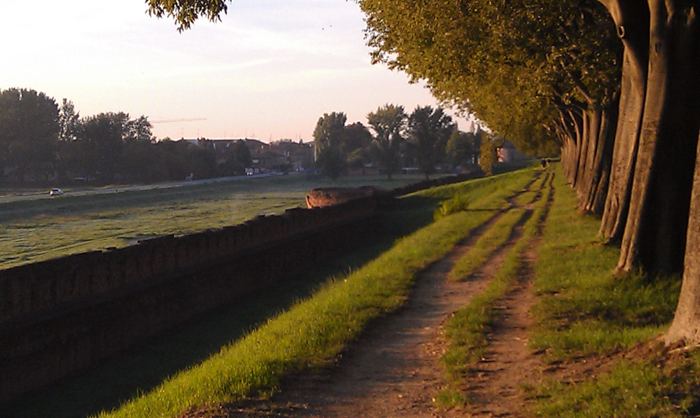
Nestled between the Veneto and Lombardia to the north, and Tuscany to the south, the region of Emilia-Romagna is not well-know to many visitors. The cities of Bologna, Ferrara, and Rimini are often overlooked by tourists traveling between Venice and Florence, but these cities have long histories as well, since 187 B.C. when the Romans built Via Emilia to connect with the cities of Venice and central and northern Europe. Along this north/south road, powerful families ruled the towns; the Este family in Ferrara, the Malatesta’s in Rimini, the Bentivoglios in Bologna. Bologna is also the site of the oldest university in the western world. The wealthy academics and royalty indulged in the best in food and wine; day long feasts were commonplace amongst the ruling classes, as one family tried to outdo the other. Bologna itself is known as the home of “la dotta, la grassa e la rossa”, the learned, the fat, and the red - the latter referring to the red hue of the majority of Bologna’s buildings as well as the popularity of the Communist party in this city.
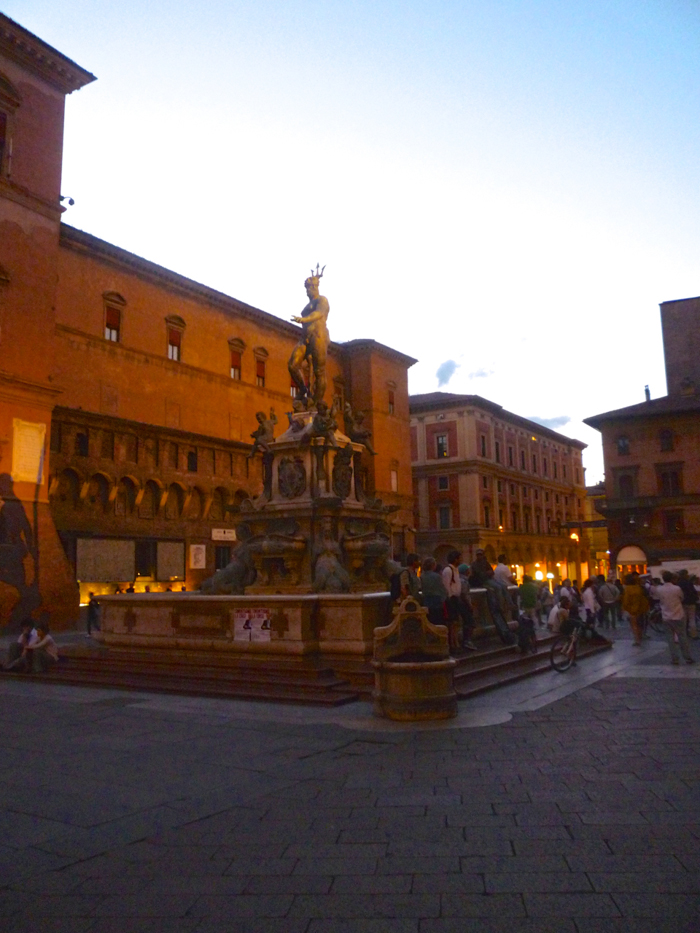
But what will be most immediately recognizable to foreign visitors to this region is it’s food. Some of the most prominent products and favorite Italian dishes hail from this region. Emilia Romagna is the only region in Italy where Parmigiano Reggiano cheese can be produced, as well as Prosciutto di Parma and the Balsamic Vinegar of Modena. It is the home of stuffed pastas, from tortollini to tortellini to capallacci. While in Bologna, enjoying a plate of homemade pasta topped with bolognese sauce is a must.
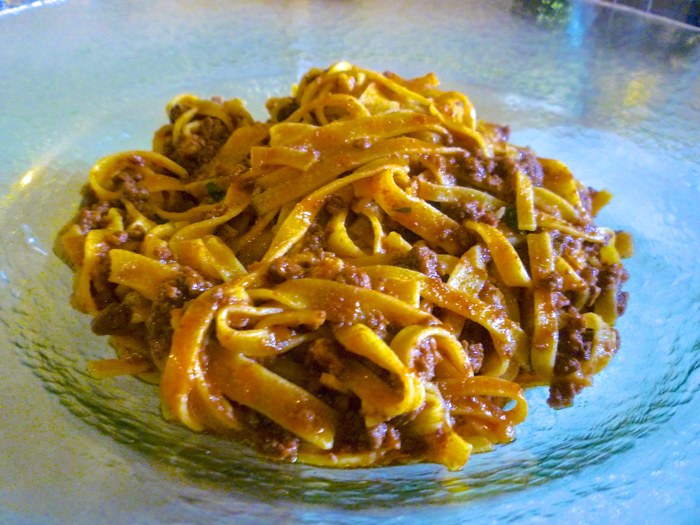
The fertile Po River Valley yields an exceptional array of crops, from rice for risottos, wheat for breads and pastas, to tomatoes, zucchini, cauliflower, beets, potatoes, peppers, onions, chard, squashes, cabbage, eggplant, green beans and asparagus, and fruits like peaches, pears and nectarines. Many of these appear in pasta sauces and vegetable dishes like grilled asparagus wrapped in prosciutto.
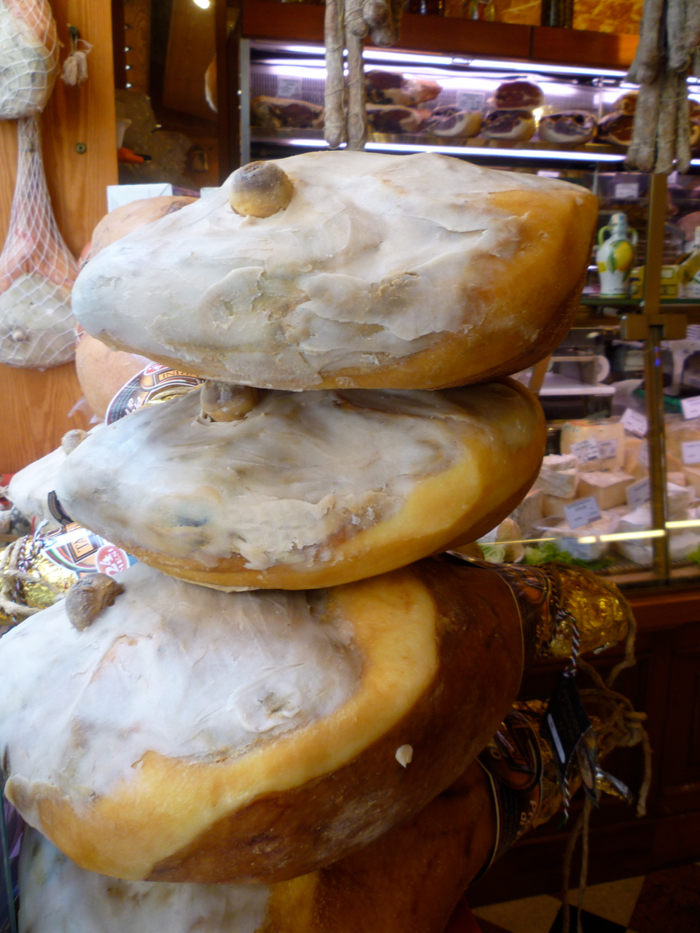
Pigs have been raised in this region since at least 1000 B.C., with today more than 2 million swine raised annually. The most famous of Italy’s prosciutto hams have been made in Parma, following a tradition handed down over hundreds of years. Here, the pigs feed on the whey left over from the production of Parmigiano cheese, which is said to make them fatter and sweeter. Coppa and pancetta are specialties of Piacenza in the north, just above Parma. A more delicate salami is the Mortadella di Bologna, the ‘original’ bologna
Parmigiano Reggiano is probably the unrivaled king of Italy cheeses. True Parmigiano cheese must be produced in the provinces of Parma, Reggio, and Emilia. Parmigiano-Reggiano is made from raw cow's milk, with each wheel requiring 170 gallons of milk. The whole milk of the morning milking is mixed with the naturally skimmed milk of the previous evening's milking. Traditionally, cows are fed only grass or hay, producing grass fed milk.
Another local product that shares in over 1000 years of tradition is the balsamic vinegar of Modena. The name comes from the Latin Balsamum, meaning a ‘balm’ or a restorative, and it was originally used for it’s curative properties. Supposedly, during the plague of 1630, the Duke of Modena carried an open jug of the vinegar in his carriage to ward off the disease. Today, it is world-renowned as a culinary condiment, highly valued by chefs, gourmets and home cooks alike.
These wonderful products of Emilia Romanga make their way into the many dishes this region is famous for:
Asparagi alla parmigiana, or con Prosciutto - asparagus, roasted or grilled, served with Parmigiano-Reggiano cheese or Prosciutto di Parma.
Gnocchi - unlike the dumplings seen in other regions of Italy, gnocchi here is a fried bread dough, often served with salami, prosciutto and/or cheese)
Scarpazzone or Erbazzone - a vegetable tart, with prosciutto and cheese, baked in the oven.
Piadina, crescentina, tigella - flatbread, shaped into a round circle, and grilled on hot coals. It can be stuffed with a wide variety of things - sausage, prosciutto, cheese, greens - as in piadina, or rubbed with lardo or fresh bacon, or served with cured meats and/or cheeses. The moniker tigella comes from the name of the clays disks between which it was traditionally cooked.
Anolini - round or half-moon shaped pasta stuffed with braised beef or breadcrumbs, eggs, nutmeg, and Parmigiano-Reggiano cheese, served in a broth, or brodo. Popular in Parma.
Cappellacci - large triangular shaped stuffed pasta, folded to resemble a hat, and filled with pumpkin, nutmeg and Parmigiano-Reggiano cheese, served with mixed meat sauces or butter, sage, and Parmigiano-Reggiano cheese. A specialty of Ferrara.
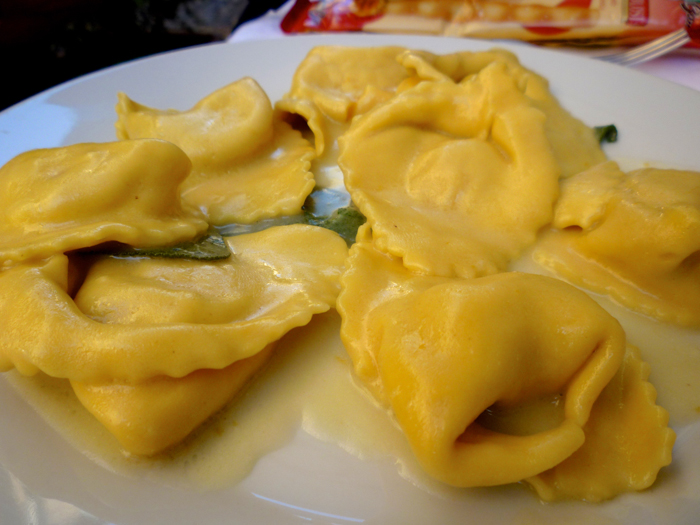
Cappelletti - another large triangular shaped, folded stuffed pasta, with different variations on meat fillings, depending upon the town you are in. Served in a broth.
Lasagne alla bolognese - baked pasta sheets layered with bolognese meat ragu, butter, Parmigiano-Reggiano cheese, and sometimes béchamel sauce. Also commonly prepared in Bologna with spinach flavored pasta sheets.
Passatelli - little dumplings of shredded spinach, cheese and egg dough, cooked in a broth. Passatelli alla bolognese uses breadcrumbs and bone marrow, rather than spinach.
Pasticcio - a round pastry pie filled with small macaroni, flavored with meat argue, mushrooms, and truffles in a béchamel sauce. The top crust is often decorated with leaf designs.
Tagliatelle alla bolognese - long ribbon shaped pasta, often golden in color. Legend has it that it was invented to honor the long flaxen hair of Lucrezia Borgia when she married Ferrara’s Duke of Este in 1487. Alla bolognese refers to the meat sauce, or ragu, that tops it - a blend of onions, carrots and celeery, with finely chopped mixed meats, milk, broth, and minimal tomato.
Tortelli, Tortellini, Tortelletti or Tortelloni - The premier speciality of Bologna is this stuffed pasta. The shape of this pasta supposedly resembles the female navel. Fillings range from ricotta, Parmigiano-Reggiano cheese, chard or sweet radicchio, prosciutto, veal, sausage, to pumpkin, often seasoned with nutmeg. To quote an article from the Gazzetta di Bologna over 100 years ago, “Tortellini is more essential than the sun for Sunday, or love for a woman.”
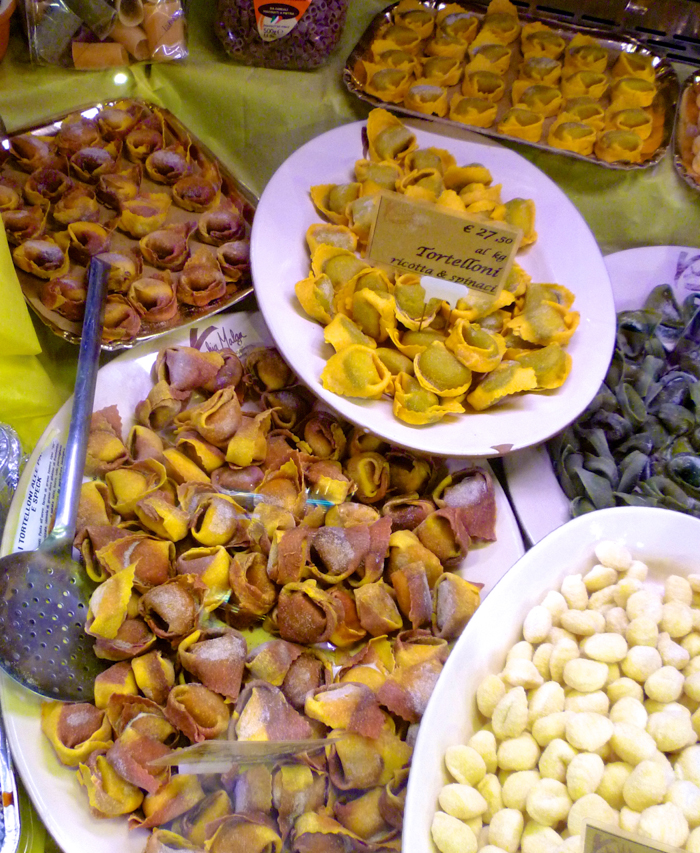
Anguilla alla Comacchio, or alla ravennate - the famous eels of Comacchio, skinned and cut into chunks, sautéed in butter and tomatoes. Also anguilla alls spiedo, with chunks of eel placed on a skewer, alternating with bay leaves.
Bollito misto - found all over Emilia-Romagna, mixed meats which can include beef, capon, veal, bone marrow, pork, zampone or cotechino, boiled together and served with a variety of side sauces, including salsa verde and mostarda.
Brodetto - The province of Ravanna borders the Adriatic, introducing many fish dishes into the cuisine of Emilia-Romagna. King of the fish dishes in this area is brodetto, a fish based soup. Made from a mixture of local seafood, with the favorite varieties and additional flavorings varying from town to town. These might include fish such as mackerel, sole, red mullet, and sardines to calamari, shrimp, and crayfish. Flavorings range from saffron, olive oil, wine, garlic, vinegar, herbs and tomato.
Costalette alla bolognese - originally made with both pork and veal, modern tastes now prefer the lighter version, with only veal. Similar to Rome’s saltimbocca, veal cutlets are breaded and fried, then topped with a slice of prosciutto, Parmigiano-Reggiano cheese, sometimes with white truffle, finished in a skillet with white wine and broth.
Cotechino - Modena favorite sausage
Salame da sugo - Ferrara’s favorite sausage, aged in marsala and red wines, and traditionally served with puréed pumpkin or potatoes.
Trippa alla bolognese - tripe cooked in broth with bacon, garlic, onion, finished with egg yolks and Parmigiano-Reggiano cheese.
Zampone - sausage stuffed pig’s feet from Modena.
Amaretti - macaroon made with almonds, exported in large quantities from Modena.
Benzone - S-shaped pastries, sprinkled with powdered sugar
Bonissima - a lemon cake filled with chopped walnuts, honey and rum
Bracciatelli - little doughnuts which street vendors used to sell at Easter threaded on canes
Castagnole - anise flavored fritters from Ravenna. Also Frittate dolci di pinoli, sweet pine-nut fitters.
Mandorlini del ponte - Ferrarese almond cookies from the almond town of Pontelagoscuro.
Pampepato di cioccolato - A very old Ferrara treat, a cake made with cocoa, pepper, spices, nuts, and candied fruits. Traditionally served at Christmas.
Panspeziale - A cake featured during the holiday season in Bologna, also called pan pepato. Flavored with nuts, dried fruits and candied citrus, boiled in wine and chocolate.
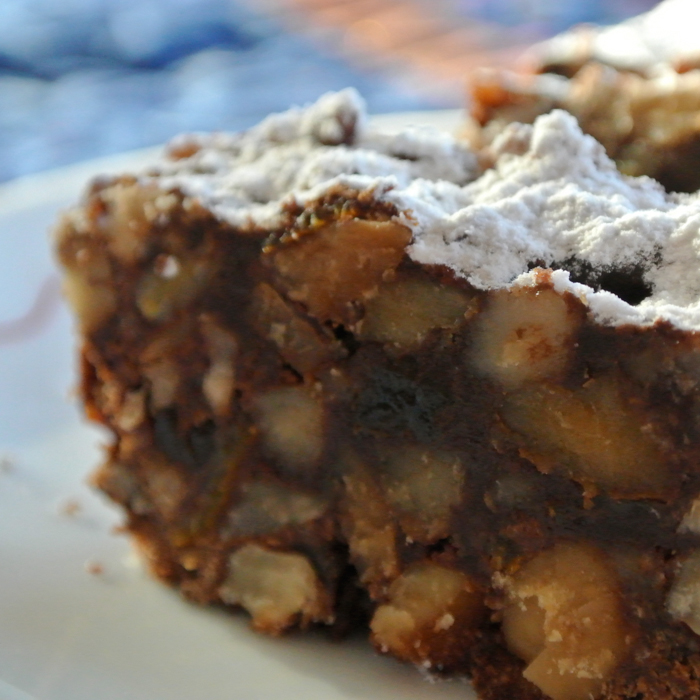
Pinza - a Bolognese tart filled with jam, various nuts and dried fruits, cocoa, and lemon zest
Spugnata - a pastry filled with honey, jam, chopped nuts, dried fruits, sometimes mostarda di frutta. Every community in the province of Parma has it’s own favorite version.
Torta di riso degli addobbi - a rice cake flavored with almonds, milk and sugar. Addobbi translate to “decorations” and original referred to the religious festivals themselves that required decorations. Today these are more rowdy celebrations, but “An addobbo with torts, like a political banquet without speeches, cannot exist.”
Torta di tagliatelle - sweetened Taglietelle dough crust, filled with butter, sugar, almonds, chocolate, and a favorite liqueur.
Torta nera - Names for its many dark ingredients - chocolate, coffee, creme di cacao, rum, and almonds mixed with butter, sugar and eggs.


